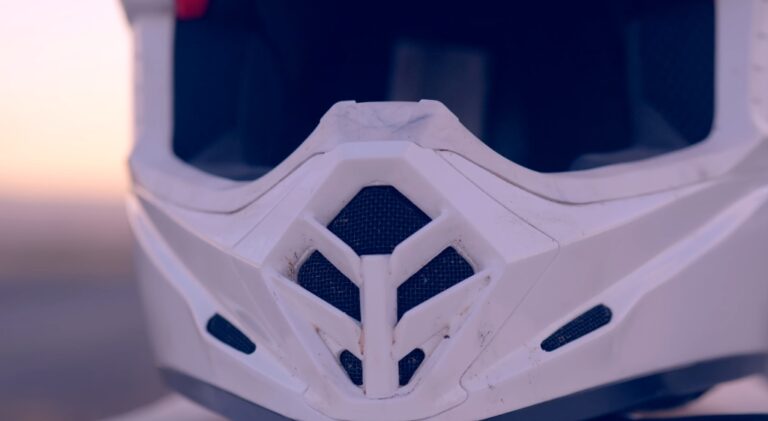One of the most important considerations when choosing a helmet is its level of protection. A good helmet should offer excellent protection against both impact and penetration. It should also be comfortable to wear, with padding that absorbs shock and doesn’t chafe.
Are Dirt Bike Helmets Street Legal
Yes, dirt bike helmets are street-legal. They offer a great deal of protection for riders who participate in off-road riding activities. However, it is important to note that not all dirt bike helmets are created equal.
Some manufacturers create helmets specifically for off-road riding, while others cater to the needs of both on and off-road riders. As such, it is important to choose a helmet that is designed for the specific type of riding you will be doing.
Are Motocross Helmets Road Legal?
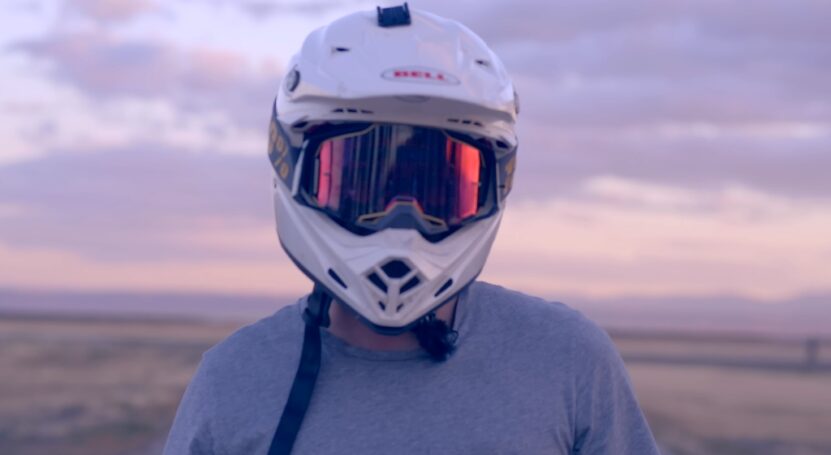
Yes, motocross helmets are road-legal. They are legally required to be worn by all riders when competing in motocross events. The same is true for other types of off-road motorcycle racing, such as enduro and cross-country.
While motocross helmets are not specifically designed for road use, they still offer a high level of protection for riders. This is because they are typically made from sturdy materials, such as Kevlar or carbon fiber.
They also have a full-face design that covers the entire head, including the chin and cheeks. However, it is important to note that not all motocross helmets are created equal.
Some helmets may not meet the safety standards required for road use. As such, it is important to check the certification of any helmet before using it on the road.
What Is The Difference Between A Motorcycle Helmet And A Dirt Bike Helmet?
The main difference between a motorcycle helmet and a dirt bike helmet is the level of protection they offer.
Motorcycle helmets are designed to protect riders from head injuries in the event of a crash, while dirt bike helmets are intended to provide more coverage and protection against debris, roost, and other impacts.
Motorcycle helmets typically have a harder outer shell made of materials like fiberglass or carbon fiber, which is designed to dissipate impact energy and protect the rider’s head from penetration.
The inner liner of a motorcycle helmet is usually made of softer materials like foam or mesh, which helps to cushion the head and absorb shock. Dirt bike helmets also typically have a hard outer shell, but the inner liner is often made of thicker, more durable materials like polystyrene.
This helps to better protect the rider’s head from impacts and debris. Both motorcycle and dirt bike helmets should be certified by the U.S. Department of Transportation (DOT) to ensure they meet certain safety standards.
However, dirt bike helmets are not required to meet the same stringent DOT standards as motorcycle helmets. As such, they may not offer the same level of protection in the event of a crash.
Dirt bike riders should always wear eye protection and protective clothing to help reduce the risk of injury in the event of an accident.
Are Motocross Helmets Street Legal?
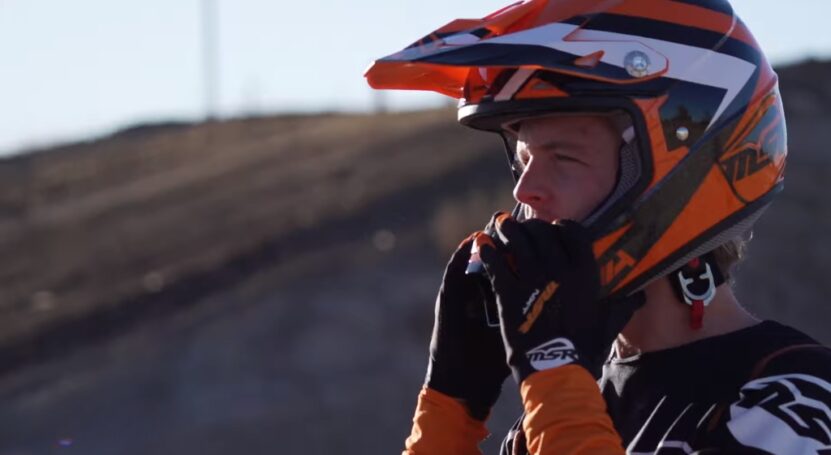
Yes, motocross helmets are street-legal in most states. However, there are a few states that have restrictions on how you can use them. Make sure to check your local laws before hitting the road.
Wearing a motocross helmet while driving is a great way to stay safe. They offer more protection than regular helmets and can help you avoid serious injury in the event of an accident.
If you are involved in a crash, make sure to get yourself checked out by a medical professional as soon as possible. Wearing a motocross helmet could save your life.
Are Dirt Bike Helmets Dot Approved
Yes, dirt bike helmets are required to be DOT-approved in order to be sold in the United States. The Department of Transportation has established minimum safety standards for motorcycle helmets, and all dirt bike helmets must meet or exceed these standards.
When shopping for a helmet, always look for the DOT approval sticker to ensure that the helmet meets the necessary safety standards.
Can You Wear A Motocross Helmet For Mountain Biking?
Yes, you can wear a motocross helmet for mountain biking. Many mountain bikers prefer to wear motocross helmets because they offer superior protection and are often more comfortable than traditional bicycle helmets.
However, there are a few things to keep in mind if you decide to use a motocross helmet for mountain biking. First, motocross helmets are not designed to be used with goggles. If you wear goggles with a motocross helmet, they will likely fog up quickly due to the helmet’s ventilation system.
Motocross helmets tend to be heavier than traditional bicycle helmets, so you may fatigue more quickly if you’re not used to the extra weight.
Finally, keep in mind that most motocross helmets are not certified by the Consumer Product Safety Commission (CPSC), so they may not offer the same level of protection as a CPSC-certified bicycle helmet.
However, many motocross helmets exceed the CPSC’s safety standards for bicycle helmets. If you decide to use a motocross helmet for mountain biking, make sure to choose one that fits properly and is comfortable to wear.
Additionally, be sure to take the extra weight and lack of ventilation into consideration when planning your rides. And, most importantly, always wear proper safety gear, including a CPSC-certified bicycle helmet, to help reduce the risk of serious injury in the event of a crash.
Why Do Dirt Bike Helmets Have A Visor?
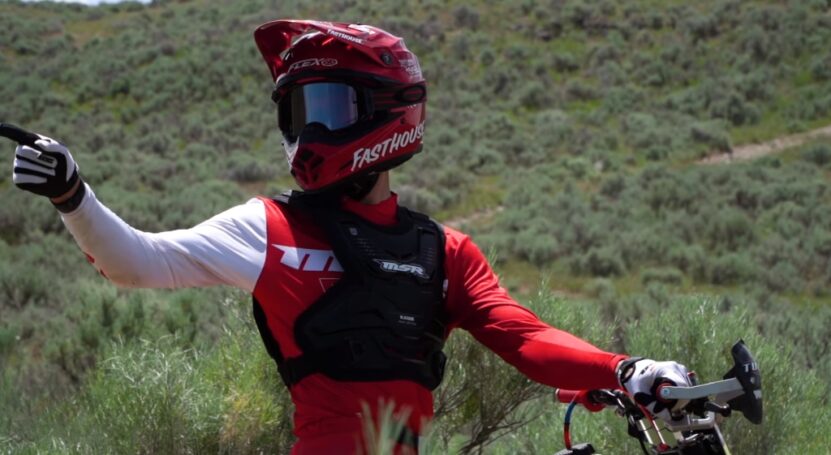
The main reason dirt bike helmets have a visor is to protect the rider’s eyes from debris and sun glare. A visor also helps to deflect wind away from the face, which can help keep the rider more comfortable while riding.
A visor can help to reduce the amount of mud and dirt that gets into the helmet, which can make it easier to keep the helmet clean. While the primary purpose of a dirt bike helmet is to protect the rider’s head, a visor can also help to improve visibility.
This is especially important when riding in dusty or muddy conditions. By deflecting wind and keeping debris out of the rider’s eyes, a visor can help the rider see more clearly and react more quickly to obstacles on the trail.
While a visor is not required by law in most states, many riders choose to wear one for the added protection it provides. If you are considering purchasing a dirt bike helmet, be sure to check out the selection of visors available to find one that best suits your needs.
Can You Use A BMX Helmet For Motocross?
No, you cannot use a BMX helmet for motocross. The main reason is that BMX helmets are not designed to handle the high speeds and impacts associated with motocross. BMX helmets generally do not have the same level of protection around the back of the head and neck, which is critical in motocross.
While you may be tempted to use a BMX helmet for motocross because it is cheaper or you already have one, it is not worth the risk. A motocross crash can easily result in serious injury or even death, so it is important to have a helmet that is specifically designed for the sport.
Are Mountain Bike Helmets And Dirt Bike Helmets The Same?
No, They are quite different actually. Dirt bike helmets are designed for off-road riding and provide more coverage than mountain bike helmets. They also have a visor to protect your eyes from the sun and debris.
Mountain bike helmets, on the other hand, are designed for on-road riding and offer less coverage. They also typically don’t have a visor since you’re not likely to be riding in the same conditions as you would be on a dirt bike.
So, if you’re looking for a helmet to use for both mountain biking and dirt biking, your best bet is to get a dirt bike helmet. They’re more versatile and will offer you the protection you need for both types of riding.
Why Are Offroad Helmets Different?
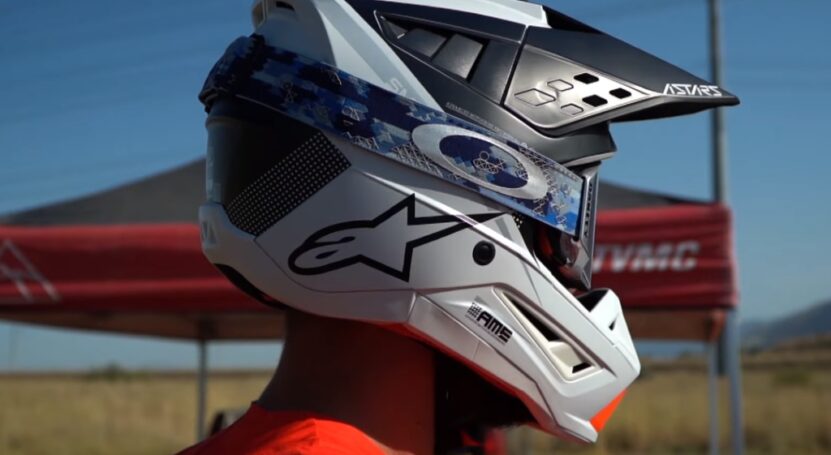
Off-road helmets are different from regular motorcycle helmets in several ways. First, they tend to be much more heavily ventilated to help keep riders cool when riding in hot, dusty conditions.
They also have a visor that can be easily removed and replaced if it gets damaged or muddy. Finally, off-road helmets often have a chin bar to protect the rider’s face from roost (debris) kicked up by other riders.
So, there you have it! Three things that make off-road helmets different from regular motorcycle helmets. Be sure to keep these things in mind when shopping for your next helmet, and you’ll be sure to find the perfect one for your riding needs!
Are Full Face Helmets Safer?
Full-face helmets offer more protection for the head and face than other types of motorcycle helmets. This is because they cover more of the head and face, and they have a chin bar that helps to protect the lower face.
Full-face helmets also tend to be more comfortable than other types of motorcycle helmets, because they provide more coverage and support for the head and neck.
Some riders prefer full-face helmets because they feel that they offer more protection in the event of a crash. However, it is important to remember that no helmet can protect you from all possible injuries in a crash, so it is still important to ride safely and defensively.
What Type Of Helmet That A Rider Must Use?
When it comes to choosing a helmet, many factors must be considered. Here are some things to keep in mind when selecting a helmet. The first thing to consider is the type of riding you will be doing. There are different helmets designed for different types of riding.
For instance, if you plan on doing mostly off-road riding, you will need a different helmet than if you plan on doing mostly street riding. Another important factor to consider is the size of your head. You need to make sure that the helmet you choose fits properly.
A good way to test this is to put the helmet on and fasten the chin strap. Then, try to move the helmet around on your head. If it moves too much, it is too big. If it does not move at all, it is too small.
You also need to consider the climate you will be riding in. If you live in a hot climate, you will want a helmet that has good ventilation. Conversely, if you live in a cold climate, you will want a helmet that is insulated.
Finally, you need to decide what type of features you want in your helmet. For instance, some helmets come with built-in sunglasses or visors. Others have Bluetooth capabilities so you can listen to music or make phone calls while riding. There are even some helmets that have cameras built into them.
Once you have considered all of these factors, you should be able to narrow down your choices and select the perfect helmet for you.
Why Do Dirt Helmets Have A Peak?
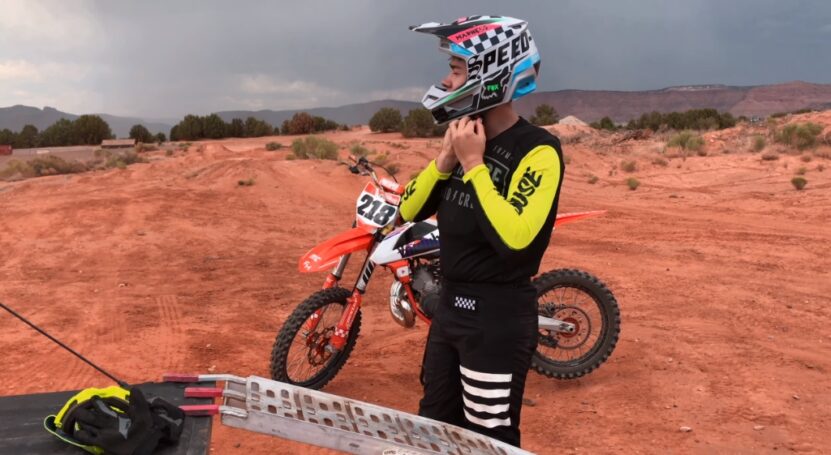
Most dirt bike helmets have a peak for two main reasons – to protect your eyes from the sun and to deflect branches and other obstacles. The peak on a dirt bike helmet serves several purposes.
Firstly, it helps to keep the sun out of your eyes. This is especially important when you’re riding in dusty conditions, as the peak will help to keep the dust out of your eyes.
Secondly, the peak helps to deflect branches and other obstacles. This is particularly important when you’re riding off-road, as it can help to prevent you from being hit in the face by a branch or stone.
Many dirt bike riders also find that the peak helps to protect their vision from the glare of the sun. This can be particularly important when you’re riding in desert conditions, where the sun can be very bright and dazzling.
In short, the peak on a dirt bike helmet is there for a good reason to keep your eyes safe from the sun and to deflect obstacles.
Why Do Dirt Bikers Wear Goggles?
Many dirt bikers wear goggles to protect their eyes from the dust and debris that can be kicked up while riding. Goggles also help to keep your vision clear by keeping the sweat and wind out of your eyes.
Wearing goggles is a personal preference, but they can be a helpful addition to your dirt biking gear.
Conclusion
In conclusion, dirt bike helmets are not typically street legal, as they do not meet the same safety standards as traditional motorcycle helmets.
However, there are a few states and municipalities where dirt bike helmet use is permitted on public roads. Be sure to check your local laws before hitting the streets on your dirt bike

